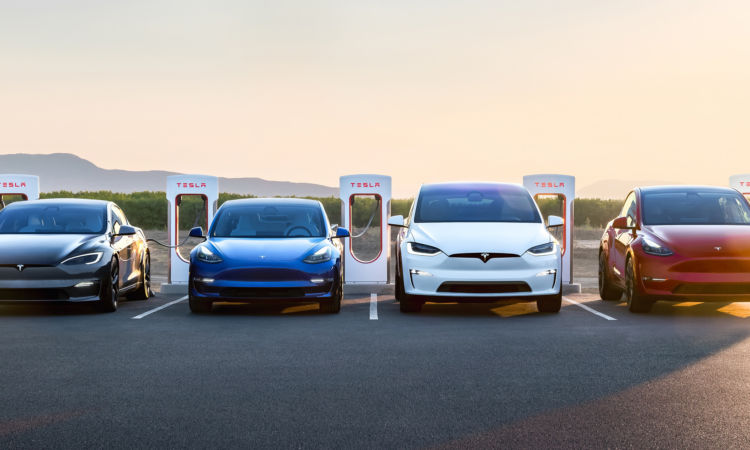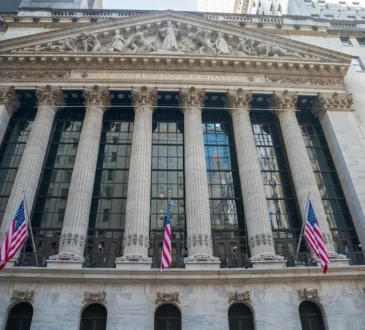
Both companies’ managements understand that EVs are the future of the auto industry, but the investment proposition at these two companies differs significantly.
Ford Motor Company (F 0.64%) offers value and potential upside, but it may struggle if it fails to adapt to the rapidly evolving electric vehicle (EV) market. Tesla (TSLA +0.57%), the leading EV company, is a growth stock with high expectations, but its valuation depends on continued success. Which is the better investment?
Ford’s EV strategy
It might seem strange to talk about Ford as an EV company, but it’s even stranger to talk about it as a viable investment if EVs aren’t a significant part of its sales in a few years. Ford CEO Jim Farley believes in EVs; otherwise, he wouldn’t have committed Ford to investing $5 billion in a new universal EV platform with the stated intent to produce a $30,000 pickup truck in 2027.

Today’s Change
(-0.64%) $-0.09
Current Price
$13.20
Key Data Points
Market Cap
$53B
Day’s Range
$13.10 – $13.30
52wk Range
$8.44 – $13.97
Volume
930K
Avg Vol
89M
Gross Margin
7.58%
Dividend Yield
0.05%
It’s a bold move, yet Ford’s Model e segment lost $3.7 billion in the first nine months of 2025. In fact, the losses at Model e were comparable to the segment profit at Ford Blue (Ford and Lincoln internal combustion engines, or ICE, vehicles for retail customers). In fact, the real money maker is Ford Pro ($7.4 billion in segment profit in the first nine months), which sells vehicles to commercial, government, and rental customers.
The issue highlights the quandary currently facing automakers. EV and hybrid vehicles are experiencing growing sales, while ICE vehicles are not, yet most EV companies, Tesla excluded, and EV operations of established companies are unprofitable. Moreover, the high costs that make EVs unprofitable also make it challenging to develop the kind of sales necessary to build a production scale that would turn them profitable.
The F-150 Lightning (the electric version of Ford’s popular F-150 pickup truck) is illustrative. Management previously expected to produce 150,000 F-150 Lightnings a year. By way of comparison, Tesla CEO Elon Musk said in October 2023 that he expected Cybertruck deliveries to hit 250,000 a year, “probably,” in 2025.
As you can see below, neither is anywhere near its target (even if you include an approximation for global sales), and Ford is widely reported to be considering stopping production of the Ford 150 Lightning EV.
|
Model |
Sales for the First Nine Months of 2025 |
Year-Over-Year Growth |
|---|---|---|
|
F-150 Lightning |
23,034 |
1% |
|
Cybertruck |
14,416 |
(38%) |
Data source: Kelley Blue Book.
The sales shortfall is more of an issue for Ford because pickup trucks are a core strength for the company, which is why Farley is determined to produce an affordable pickup truck in 2027. In a nutshell, Ford is forced to invest heavily in producing EVs, a business that it’s currently hemorrhaging money from, but one that it needs to be in to remain relevant over the long term.
EV sales may be behind most automakers’ estimates, but they remain the growth area of the auto market.
Investing in Tesla
The leading EV company’s sales declines in 2025 are well documented and a cause for concern. Still, the real catalyst for the company’s stock will come if and when its robotaxi business takes off and it releases unsupervised full self-driving (FSD). Thinking longer term, Musk believes the Optimus robot will be a significant value creator for the company.

Today’s Change
(0.57%) $2.31
Current Price
$404.30
Key Data Points
Market Cap
$1345B
Day’s Range
$382.80 – $412.17
52wk Range
$214.25 – $488.54
Volume
4.6M
Avg Vol
88M
Gross Margin
17.01%
Dividend Yield
N/A
Tesla stands in a strong position for the opportunities and challenges ahead. Despite the fierce competition in 2025 (as other automakers released EVs they had previously invested heavily in, and the regulatory environment was less favorable), Tesla remains profitable and cash generative.
Moreover, the robotaxi/unsupervised FSD initiatives are an organic and natural evolution of its EV business. Tesla’s massive fleet of vehicles on the road creates the data used to improve the development of FSD, and Tesla owners are potential supervised and unsupervised FSD customers. They are also potential robotaxi owners, as existing Tesla EVs can be transformed into robotaxis using a version of unsupervised FSD.
Meanwhile, Tesla plans to produce its dedicated robotaxi, the Cybercab, in volume in 2026.

Image source: Tesla.
Which stock is the better buy?
The risk for Tesla is that it could fail to achieve its robotaxi and unsupervised FSD aims within the time frame or scale (robotaxi adoption) the market is expecting. But achieving them would add substantive value to the company. For Ford, the failure to gain market share in EVs would create considerable challenges.
The futures of both companies ride on transformative developments. Still, the difference is that Tesla’s growth is organic, albeit slower than expected, while Ford is reacting to events because it has failed in its EV and autonomous vehicle strategy.
You don’t have to buy either stock, but Tesla is the better buy for an investor looking to take on some risk.




